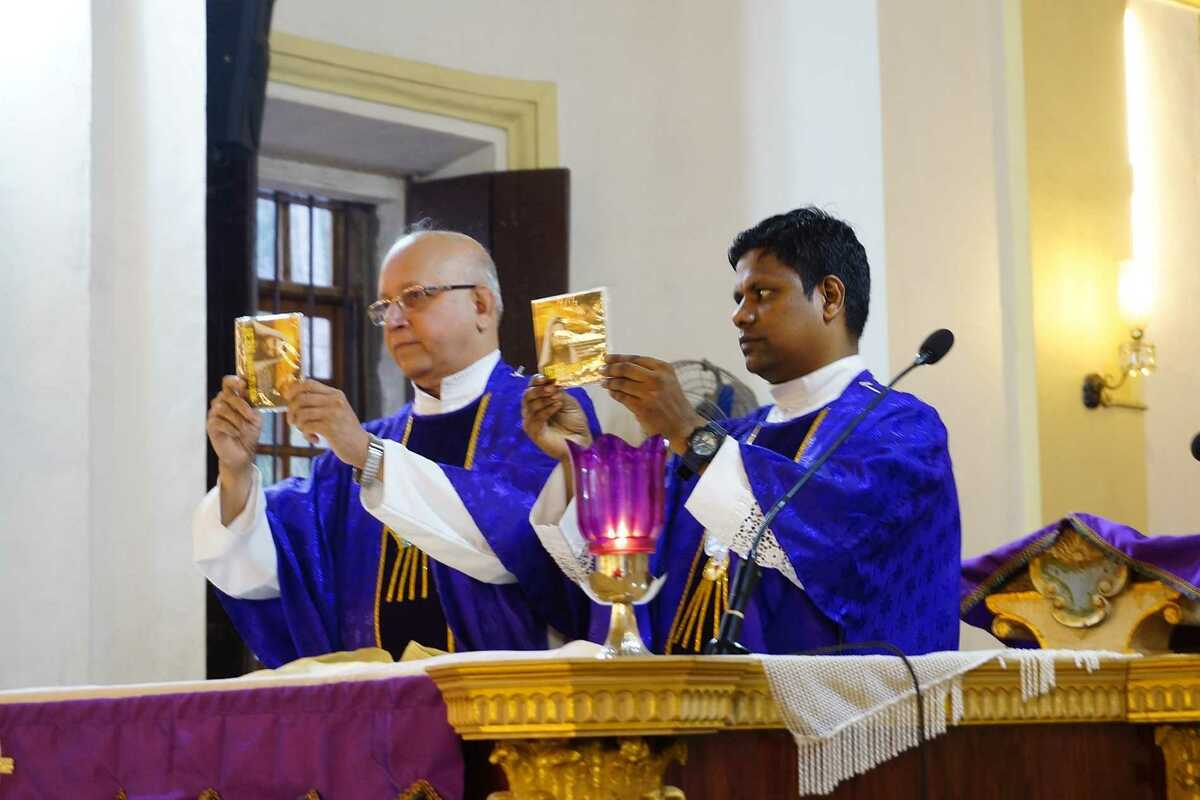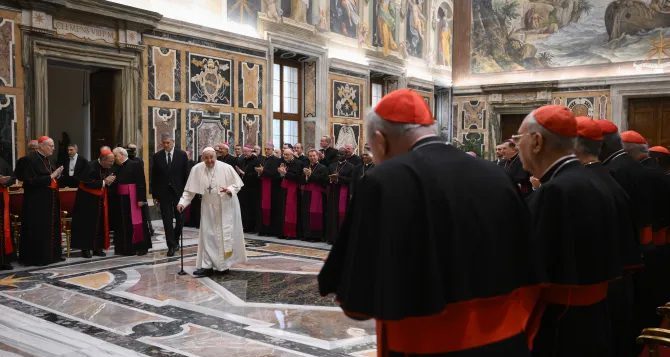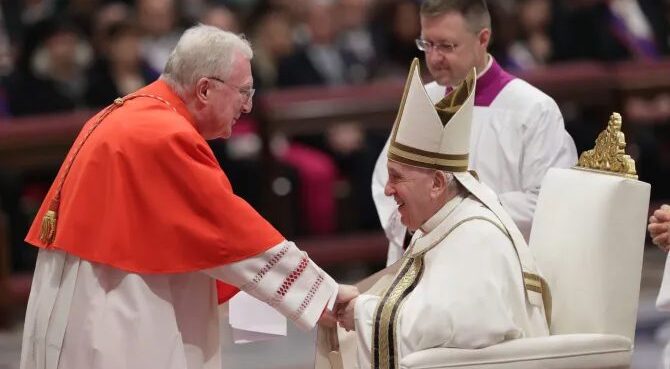Introduction
With the promulgation of the Constitution on the Sacred Liturgy, Sacrosanctum Concilium, the bishops at Vatican II enthusiastically and ardently hoped to renew the Eucharistic liturgy. While achieving much of what the Council desired, the postconciliar implementation of this renewal has also included many undesirable aspects and unforeseen distressing consequences. Since the close of the Council many of the faithful, clergy and laity alike, have expressed concerns regarding the way the liturgical renewal has been implemented. Often the liturgy has become a battleground between competing factions. With Pope Francis’s 2021 motu proprio Traditionis Custodes and the Congregation for Divine Worship’s subsequent clarifications in its Response to dubia, apprehensions regarding the liturgy have been heightened among many of the faithful. Since these documents strongly discourage and strictly limit the celebration of the Tridentine Mass (also known as the Traditional Latin Mass), this disquiet is particularly found among priests and laity who wish to celebrate that form of the Roman rite. The unease has not abated with Pope Francis’s most recent apostolic letter, Desiderio Desideravi, in which he provides theological and pastoral underpinnings for his earlier directives and also decries the liturgical aberrations that have marred the post-conciliar Church.
Concurrent with the growing liturgical tensions, the US bishops, deeply concerned about the loss of faith in Jesus’s real presence in the Eucharist among American Catholics, have launched a massive endeavor aimed at renewing Eucharistic faith and devotion. As the USCCB website states:
The Bishops of the United States are calling for a three-year grassroots revival of devotion and belief in the Real Presence of Jesus in the Eucharist. They believe that God wants to see a movement of Catholics across the United States, healed, converted, formed, and unified by an encounter with Jesus in the Eucharist—and sent out in mission “for the life of the world.”
These three years will culminate in the first National Eucharistic Congress in the United States in almost fifty years. Almost a hundred thousand Catholics will join together in Indianapolis for a once-in-a-lifetime pilgrimage toward the “source and summit” of our Catholic faith.
In the light of Vatican II’s desire to renew the liturgy and the American bishops’ effort to revitalize Eucharistic faith, we wish to address the theological, liturgical, and pastoral issues that have arisen over time and that presently disrupt the unity and peace of the Church.[1] Our hope is that, in bringing some clarity to what has developed, both positively and negatively, a constructive way forward may be found.
Our treatment will proceed in eight sections:
- The rise of the liturgical renewal
- The state of the liturgy prior to Vatican II
- The Council’s reforms as outlined in Sacrosanctum Concilium
- The implementation of Sacrosanctum Concilium
- The movement to return to the Tridentine liturgy
- The pastoral strategies of Popes John Paul II, Benedict XVI, and Francis
- Theological and pastoral concerns with the Traditional Latin Mass movement
- The way forward.
1. The Rise of the Liturgical Renewal
In the debate over Vatican II’s liturgical reform and its subsequent implementation, what is often overlooked is the rise of the liturgical movement prior to the Council. The desire for a renewal in the understanding and experience of the liturgy was fostered in various settings and comprised multiple components. A number of European Benedictine abbots and abbeys were most influential.
Dom Prosper Guéranger (1805–1875), the founder of the Benedictine abbey of Solesmes in France, is often considered the father of the liturgical renewal. He fostered the renewal by updating liturgical books, stressing the importance of the liturgical year, and promoting the revival of Gregorian chant. In 1903, Pope Pius X published Tra le sollecitudini, which contained directives for sacred music and underscored the importance of Gregorian chant in the liturgy, confirming the work of Guéranger. In these directives, Pope Pius encouraged the participation of the laity by employing for the first time the phrase “active participation” (actuosa participatio).
In particular, the laity are to actively participate in the liturgy through their singing of Gregorian chant. A century later, Pope John Paul II wrote: “The centenary of the Document gives me the opportunity to recall the important role of sacred music which St. Pius X presented as a means of lifting up the spirit to God and as a precious aid for the faithful in their ‘active participation in the most holy mysteries and in the public and solemn prayer of the Church.’”[2] This emphasis on the importance of singing Gregorian chant finds it full expression, as we will see, in Vatican II’s Constitution on the Sacred Liturgy.
The German abbey of Maria Laach, under the authority of Abbot Ildefons Herwegen, also played an influential role in the liturgical renewal during the first half of the twentieth century. Odo Casel (1886–1948), a monk of Maria Laach and an expert in ancient and medieval liturgies, became one of the most prominent proponents for liturgical renewal. In his chief work, The Mystery of Christian Worship, he states:
From thence it comes that the whole church, not merely the clergy, is to take an active part in the liturgy, each according to sacred order, in his proper rank, place, and measure. All members are truly, sacramentally conjoined to Christ their head; every believer, because of the sacramental character he received in baptism and confirmation, has part in the priesthood of Christ the head. This means that the layman does not merely assist with private devotion and prayer at the priest’s liturgy, but is, by his objective membership in Christ’s body, a necessary and real sharer in the liturgical fellowship.[3]
Here we again find the importance of lay participation in the Eucharistic liturgy, founded now upon the sacramental character of their participation in the priesthood of Christ. One’s inner participation in the liturgy is to be expressed perceptibly by one’s words and actions. Thus the priest and people together offer, each according to their proper sacramental role, the one sacrifice of the Mass, and together partake of the body and blood of Jesus Christ.
Dom Lambert Beauduin (1873–1960) was a monk of the Benedictine Abbey of Mont César in Leuven, Belgium. He was greatly influenced by his prior, Columba Marmion (1858–1923), who fostered the renewal of the priesthood and liturgy. Although Beauduin opposed the use of the vernacular, he furthered the active participation of people in the liturgy by promoting bilingual missals in which they could silently pray along with the priest. He and the monks of Mont César also published liturgical and spiritual instruction manuals to educate the laity. Beauduin was thus very practical in his approach in furthering the emerging liturgical renewal.
The writings of Maurice de la Taille, SJ (1872–1933) also greatly influenced the movement, particularly…



